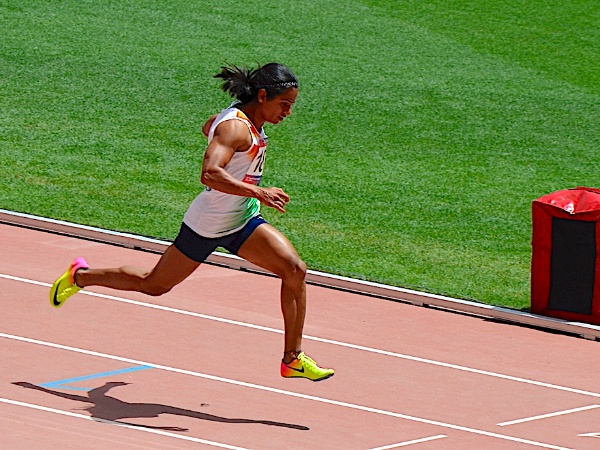views : 816
4 Min Read
Anti-doping war: AFI ups ante against coaches; plan to test more athletes faces challenges
Athletics Federation of India (AFI) is prepared to take the war against doping to the next level, coming up with some measures to keep the focus on track and field rather than the disastrous impact that scores of positive tests for banned substances are having on the image of the sport in the country. AFI has many reasons to seek a more robust plan to supplement National Anti-Doping Agency’s (NADA) workd. Recently, Olympic and World Champion Neeraj Chopra articulated his concern against doping. AFI’s decision to do away with national camps and let athletes, except relay teams, train in venues and with coaches of their choice could be another reason.
The growing number of Indians in the AIU’s Global List of Ineligible Persons would be another major reason. The latest list, uploaded on January 1, has a total of 631 athletes or athlete support personnel from around the world. Kenya (120) and India (105) are the leading nations on this dubious chart, ahead of Russia which has 72.
There are six Indian teenagers in the AIU list of Ineligible Persons. Dodla Sai Sangeeta, who was part of two gold medal winning relay teams in the Asian U20 Championships in Dubai in April 2024, tested positive for Stanozolol in a meet held a month earlier. The loss of the gold medals could be a third cause for AFI to think of bolstering NADA’s war against doping.
However, more than anything else, the fact that two athletes competed in the World Cross Country Championships in Belgrade last year despite being placed on provisional suspension could have sparked AFI into forming the Anti-Doping Cell. No matter what, AFI’s decision to supplement NADA’s work is laden with good intent.
In a recent interaction with The Indian Express, Parth Goswami, a special invitee to the AFI Anti-Doping Cell, revealed that identifying errant coaches, listing training centres which acted as hideouts, sharing intelligence with AIU and NADA as well as collecting samples and sending them to a WADA-accredited laboratory are some measures being explored by the Cell.
For long, it has been believed that the scourge of doping has been fueled by coaches looking for short-term gains and recognition. The committee appears to have suggested that only in the rare case does a coach not know that her/his athlete is doping. AFI’s decision to make coaches responsible for keeping track and field sport clean has to be welcomed with a second’s thought.
Yet, it must be remembered that NADA has sanctioned a grand total of one coach for administering a prohibited substance to an athlete and for complicity in an anti-doping rule violation. Mickey Menezes was banned for four years, and fined Rs 50,000, after an adjudicating panel held him guilty of injecting a banned substance into his trainee, Kirti Bhoite.
Each time an athlete mentions a coach or support personnel as the instigator, NADA must ideally follow through and investigate that person to be able to bring her or him to justice. Unfortunately and very sadly that does not seem to happen. And nobody seems to be aware if more cases have been pursued against coaches for such acts.
Parth Goswami’s suggestion that NADA’s capacity to collect samples and conduct its own out of competition tests has its challenges. First, as things stand, the Athletics Integrity Unit – which run the sport’s anti-doping programme – does not yet mandate testing by any of World Athletics’ Member Federations.
Secondly, according to information made available through RTI by the National Anti-Doping Agency, as many as 1881 samples were collected from track and field athletes in the first 11 months of 2024. These formed 27.06 per cent of the total 6951 samples collected by NADA in that time.
One is unsure whose samples that Parth Goswami was suggesting that the AFI could collect and test. But looking at the list of track and field athletes whose samples were collected last year as well as the athletics events and locations where NADA’s Doping Control Officers made their presence felt, it can be said that NADA left little to chance.
As far as raiding hideouts is concerned, the National Anti-Doping Act 2022 has empowered only those authorised by NADA to enter any place at reasonable times, search the premises and seize equipment, substance etc. as evidence of an anti-doping rule violation or to prevent or mitigate a rule violating.
There have been instances of NADA officials raiding athletes’ rooms in NIS Patiala and at least one instance of them seizing banned substance – Meldonium, to be specific. However, an appeal panel ruled that NADA did not have search and seizure right and hence overturned the first instance panel decision to ban him for four years and let the athlete get away.
It is for this reason alone that care must be taken to ensure that any ‘raid’ or search and seizure operation is conducted within the ambit of the National Anti-Doping Act 2022. Merely blacklisting coaches may not serve the purpose. There must be handed down consequences as laid down in the Act.
